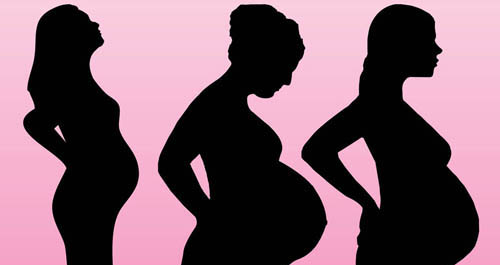- Clinic:
- 0733 945 717
- 0739 434 212

Lost periods and inability to conceive
March 8, 2023
Low back pain, Gynecological cause or else?
March 15, 2023I have fibroids, and am pregnant

Fibroids are non-cancerous growths on the womb (uterus), and are very common in women. Scientific studies estimate that fibroids occur in about one in every two women.
Fibroids usually develop prior to pregnancy, and it’s not uncommon for women to be told they have fibroids at the time of their first pregnancy scan. Fortunately, majority of women with fibroids in pregnancy will not experience any complications. The growth of the unborn baby is largely unaffected. Pregnancy advances normally, and delivery is not any different from that of other women without fibroids.
However, ten to thirty per cent of women with fibroids in pregnancy will experience some fibroid-related complications. Such complications are usually related to the size and location of the fibroids. Majority of fibroids do not increase in size during pregnancy, and some may actually shrink and become smaller. About one third may increase in size as the pregnancy advances. Fibroid location varies, and could be on the uterine surface, inside the uterine muscles or encroaching the cavity of the uterus. Further scans are usually advisable as pregnancy advances for monitoring purposes.
In early pregnancy, there is a slightly increased risk of miscarriage especially if the fibroids are multiple and causing distortion of the uterus; or if located close to or inside the uterine cavity. If miscarriage does occur and no other cause is found, removal of such fibroids may be advisable prior to a subsequent conception.
Pain is the commonest complication of fibroids during pregnancy, mostly occurring in the second half of the pregnancy. This is thought to result from degeneration of the fibroids as pregnancy advances. Treatment is usually with effective pain killers, maintenance of good hydration and adequate rest.
Large fibroids (greater than 5cm) may increase the risk of premature labor and delivery, and may also interfere with the positioning of the unborn baby inside the uterus. If the fibroids distort the uterine shape, the unborn baby may suffer compression deformities due to unusual positioning. There may also be interference with placental location and development, increasing the risk of bleeding during the pregnancy.
Interference with labor and delivery may also occur. Large fibroids may affect uterine contractions and delay the progress of labor. And if located low in the uterus, they may block the birth canal or cause abnormal positioning of the baby, thereby negating vaginal delivery. Therefore, there is a slightly higher chance of a Cesarean delivery in such cases. If women have had previous surgical removal of fibroids(mastectomy), Cesarean delivery may also be advised in certain cases.Following delivery, the risk of bleeding is slightly increased, again related to fibroid size and location
Definitive treatment of fibroids, if necessary, should await delivery and reversal to a pre-pregnancy state. Myomectomyis not advised at the time of Ceserean delivery.
Take a fertility test today
